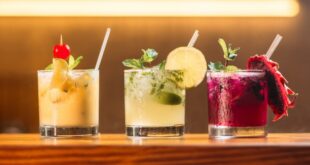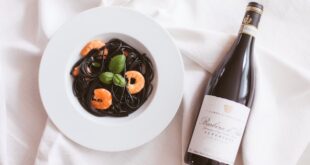Last Updated on October 4, 2023
Are you a big fan of wine? Have you always wanted to throw a wine-tasting party, but kept putting it off thinking you had to be a wine connoisseur to make it a success? Well, good news – you don’t have to be. A wine tasting party is a great and different way to gather friends together to make some great memories. Here are five tips to ensure your wine tasting party is an epic success.
1. Do your research
View this post on Instagram
The first step to organising an epic wine tasting party is doing your research beforehand. Before ordering a case of wine, learn about wines. From rich red Shiraz to sparkling Crémant, and covering your bases is a must. After all, the whole point of a wine tasting event is for everyone to try new wines – including yourself.
Do research online, get a book or two, or even go and talk to experts in your local wine shop or bar who might be able to pass on some knowledge and advice about the tipple and how best to enjoy it.
Taking time to develop your understanding will ensure a smoother and more exciting experience for your guests, allowing you to impart your newly acquired knowledge while arming you with methods for tasting, serving, and food pairings.
You can also take this time to cater to specific friends’ requirements or your own personal interests. Organic wine, vegan wine, or wines from a specific region could all make excellent themes for your wine tasting party.
You may also like: The World’s Most Famous Red Wine Blends
2. Have a good selection
Ideally, you want to make sure that your guests sample at least five different varieties, if not more. Many companies suggest 8-10 on average, and each tasting should be done in rounds of two to recognise and appreciate the contrast in flavours.
Include both red and white variants for a broad range of flavours, starting from lightest to darkest, and remember that a tasting pour is much less than the standard at half a regular serving, (between 50 and 75ml, or 5/7.5cl). If you are pressed for time, you can make it easier on yourself by getting each guest to bring a different wine based on type or region.
Dessert and sparkling wine should be well chilled. Lighter, more aromatic, and unoaked whites should be chilled. Fuller body whites and much lighter body reds can be served lightly chilled. Then, big full body reds should be served at room temperature. Remember to take guests’ preferences into accounts on serving temperature as well. Start lightest to darkest as reds tend to be much heavier and best served at the end.
3. Serve the right food pairings
View this post on Instagram
While wine is the main highlight, it is still important to carefully select the food you will serve. Cheese, bread, grapes, and crackers make the perfect pairing for most wines and are great to cleanse the palate between each sample.
Do some research before creating your cheese platter and hit your favourite local markets. Make sure your selection is varied, including soft and creamy cheeses like a classic brie, something bold flavour-wise like a rich blue Gorgonzola, a sharp aged cheddar, and lastly, a firm cheese like a Manchego. This will ensure that there is something for everyone and there is a cheese to go with each wine.
Garnish with a mix of grapes, nuts, dark chocolates, and olives for a range of sweet and salty snacks. If you feel particularly bold, you could also research which foods will allow your guests to metabolise the wine slowly and look into how the sugars, acids, and tannins in foods interact with your wine selection – a great lesson in wine and food pairing!
This will further your knowledge and help you evolve your upcoming wine-tasting parties. Just remember to let your guests know what will be served, so they don’t arrive on an empty stomach expecting a full-blown menu.
You may also like: Food and Wine Pairings Around The World
4. Keep it intimate
A wine tasting event is not the same as an average house party. It should be limited to 10 guests or fewer to make it easier to pour single bottles into portions, while encouraging meaningful conversations. One bottle of wine should be enough for up to 15 people, (if you stick to single servings of 5cl for each wine). Going over these servings, risks purchasing multiples of each wine, to make sure that there is enough for everyone to sample, which could get pricey quickly.
You must also remember that some guests might want a re-taste, so you want to make sure you are well stocked up. Provide spit buckets for attendees who wish to sample but don’t want to get too merry, and start by pouring a small taste sample for each person.
5. Show them how it’s done
Unless your guests have been to a wine-tasting experience before, they likely won’t know the proper way to go about it. And even if there are a few seasoned experts, chances are still high that you will have some novices in the room with you.
To make your tasting party a success, it is essential to explain to your attendees how to properly taste and sip the wine. This is so they can catch the varied tasting notes without simply drinking it as they usually would.
If you want to avoid having to repeat yourself and take the pressure off, consider putting out cards noting the name of the wine, vineyard, flavour profile, year, and food pairing suggestions. This can then be accompanied by instructions for what to look out for, how to sniff, and how to taste.
Providing small notepads for your guests to write down their experiences is a nice touch. It encourages everyone to share the wine tasting as a group and start conversations about aromas, tastes, and comparisons, while providing them with information to refer back to later.
You may also like: How to Open Your Wine Bottle Like a Pro
Wrapping up
Throwing a wine tasting party can be slightly more complicated than your average soiree. However, as long as you are organised, do your research beforehand, have a good selection of wine, and show your guests how to taste properly, you are guaranteed a great time. So, grab a few bottles, invite some friends around, and get sipping!
 Travel for Food Hub The Food Blog for Travel Lovers
Travel for Food Hub The Food Blog for Travel Lovers
















